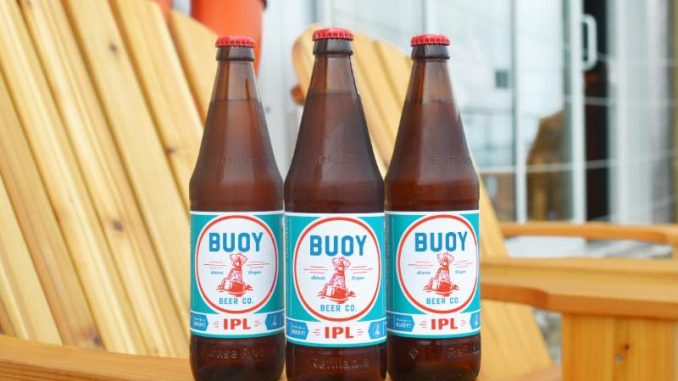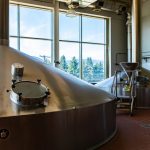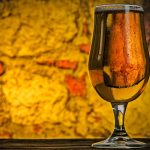
India Pale Ale, an exotically titled beer which has as colourful a history as any brew both in the UK and in the USA where it is now brewed with considerable skill. For many beer officianados, Indian pale ale has always been with us, or certainly since the 1700s because it was probably already brewed as a type of pale ale but not one that has the distinctive monnicker of today. It is as well known as IPA as any other.
The story of the ale probably begins in the Midlands of Great Britain in the 1700s although the London Docks has a major part to play in the story. Certain brewers based in Burton and Birmingham were already trying our grain and hop combinations to improve the stability of their beer. They clearly hit on the right combination when they found a brew that could stand up to the rigours of a ship journey. Pale ale, which is an ale brewed using pale malt was being brewed on a regular basis but there was always a form of research being conducted to help extend its shelf life.
The story goes that the British India were very keen on home brewed beers. India at that time was not a place for brewing because of the extreme heat although they seem to have cracked that issue in recent years. However, beer was and still is extremely popular. One reason being that it was a potable source of water in the UK.
Beer was also a potent and potable source of water in India. It probably meant they could drink it easily to assuage the thirst, especially of the army that was now coming into the country. Imperial and empire traditions aside, the beer needed to be transported. Unfortunately most brews did not fare well on a sea journey of at least 6 long, gruelling seasick months. The beer was often poorly looked after with barrels rolling around below deck and it often got drunk anyway. With the level of hygiene in breweries then it was not unusual for a beer in a barrel to go off or keep on fermenting with the wrong sort of yeasts at the best of times.
Hence, a brew was developed which would survive the difficult journey. That journey incidentally was usually round Brazil to the Cape of Good Hope off what is now Chile and then to places like Kolkata (Calcutta).
For most people, the originators of the IPA was George Hodgson’s Bow Brewery which sat between the counties of Middlesex and Essex. We are told that the Bow Brewery beer was drunk by traders for the East India Company in the late 1700s, probably around 1780, because the brewery sat close to the East India Docks. It soon became one of those beers to be sent on its travels. Hodgson, according to the pilot plant brewers at Birmingham University over hopped the beer. Then it was called October Ale and would in all probability be one to store and aged rather than drunk immediately. The beer was sent off to India on board ship where it appears to have aged really well. It also kept well in the heat and thus survived for a few months in the Indian climate. From then on the beer enters the realms of history.
The Midland breweries took on the mantle of brewing IPA too. Bass and at least a few others based in Burton on Trent. The beer over the 1800s became paler as the malt type became softer and paler.
The beer has a typically robust and strong body with an amber, almost copper like colour. I’ve brewed this one in a test pilot plant to examine hop varieties. It usually has an alcohol content at 14.5% ABV but there are variations. One of the main drivers for its resurgence comes from home brewers who have examined the best recipes. For many brewers it is the answer to bland tasting session beers and lagers. It has however fallen out of favour at various times but them re-emerged in another country.
The USA and Canadians appear to have taken it on board along with their own version the American Pale Ale, or just Pale Ale. If you travel to Oregon and Washington states you’ll see many IPAs on hand. These seem to fit better with their brew offerings.
Oregon was seething in the heat so a trip to Astoria and then onto Long Beach, Washington across the Columbia river mouth was the weekend trip. By the way, the mouth of the river is a typically bigger version of the Severn estuary – you cannot see the other side however as clearly because it is so far away. Astoria has a few great breweries such as Buoy Beer Co. The brewery appears to be an old canning factory supported rather precariously I think on thick wooden but squat stilts. (I found it was pronounced as Booey by the way).
The IPA at the Buoy Beer Co. brewery is 7.5% ABV with 70 International Bittering Units (70 IBUs). The IBUs might not mean a lot save that this beer is not overly hopped but does have a well-rounded, flinty bitter flavour that comes from the pale malts. I tried scanning the ingredients but the helpers on the restaurant told me what was going into that night’s brewing schedule. The hops are a mix of Meridian and Crystal which tend to produce a darker rather than richer flavour although they always retain their citrus lemon notes. I can’t tell you the ratio but that beer was ideal for a languid Summer’s evening on a Friday night on the rafters of the old quay. No seals to be seen sadly beneath the spy hole but let’s face it they were down in California anyway. Two pints later and you can begin to feel the heat of the day slowly evaporate away. If you think about food pairing, it went extremely well with their clam chowder.
I’m also proud to wear the Buoy Brewing T-shirt which comes in a fetching dark- chocolate brown.



Leave a Reply